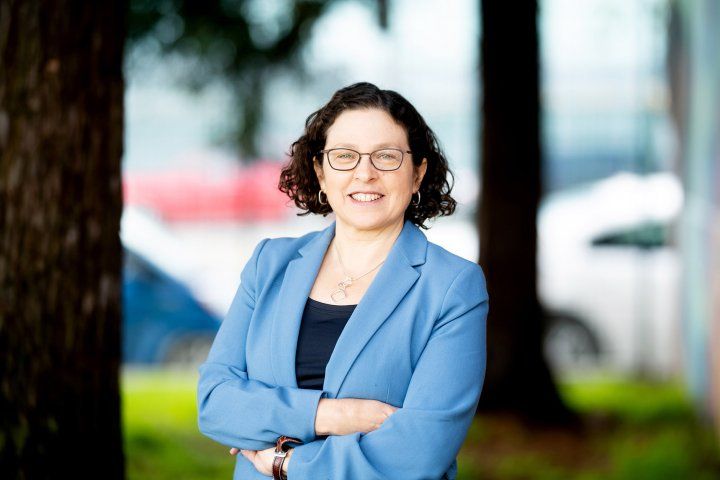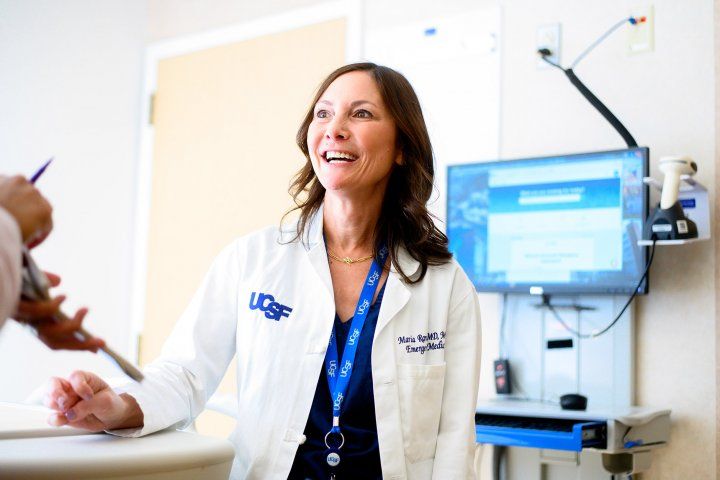

Margot Kushel, MD
“The bottom line is that even really high-risk folks can be housed,” said Margot Kushel, MD, professor of medicine and director of the UCSF Benioff Homelessness and Housing Initiative. “It takes a bit of time, and they need the flexibility to be moved to a new place when the first one didn’t work out.”
Researchers selected the most frequent users of acute medical, psychiatric and other emergency services for the study. Participants averaged five hospitalizations, 20 visits to the emergency department, five to psychiatric emergency services, and three to jail in the two years prior to being enrolled. While these are the homeless people who are the most visible to the general public, and to many health care workers, researchers said they represent only about 5 percent to 10 percent of chronically homeless individuals.
“The folks that we serve in this program have been extraordinarily sick and on the streets a long time, but the resiliency that they show once housed is always inspiring,” said Louis Chicoine, Abode’s chief executive officer. “Abode, through a multi-disciplinary team has provided the housing, clinical, and peer support needed to get people in their own homes and help them achieve their wellness goals.”
Researchers found extremely high death rates, even among those who were successfully housed. Although participants’ average age was just 51, 70 of the 423 participants died over the 2.5 years under study, with similar numbers in the supportive housing and control groups.
“There were a lot of deaths, because people were very, very sick when they enrolled,” said Maria Raven, MD, MPH, associate professor of emergency medicine, chief of the Department of Emergency Medicine at UCSF and a member of the advisory board of the Benioff Homelessness and Housing Initiative.
 to another person in a hospital room" width="720" height="480" />
to another person in a hospital room" width="720" height="480" />
Maria Raven, MD, MPH
With such high medical needs, the researchers said it was unrealistic to expect permanent supportive housing to reduce the need for medical services. Compared to controls, however, those in the intervention group made significantly less use of psychiatric emergency departments, while using more outpatient mental health services.
“These people are so far down the road in their illnesses, you’re so far from primary prevention,” Raven said. “It is an effective intervention, but it’s late in their life course.”
Use of medical and emergency services declined for both groups over the course of the study. Researchers attributed that to regression to the mean, which occurs when people are recruited into a study at a high point in their use of services.
But the results nonetheless demonstrate that the program works.
“Project Welcome Home is an excellent example of why expanding the supply of permanent supportive housing is so critical,” said Ky Le, Deputy County Executive, County of Santa Clara. “This study proves what we already know: Housing is medicine. The real challenge is harnessing the will necessary to create this solution at scale. I'm hopeful that this study will be one more tool in our efforts to end homelessness in our community.”
Authors: Maria Raven, MD, MPH, Matthew Niedzwiecki, PhD, and Margot Kushel, MD, of UCSF.
Funding: Arnold Ventures, Benioff Homelessness and Housing Initiative, National Institute on Aging.
The University of California, San Francisco (UCSF) is exclusively focused on the health sciences and is dedicated to promoting health worldwide through advanced biomedical research, graduate-level education in the life sciences and health professions, and excellence in patient care. UCSF Health, which serves as UCSF’s primary academic medical center, includes top-ranked specialty hospitals and other clinical programs, and has affiliations throughout the Bay Area.